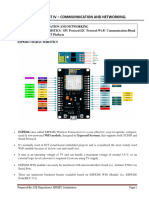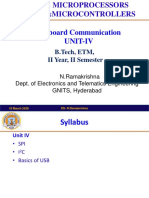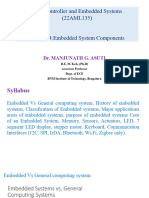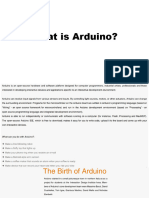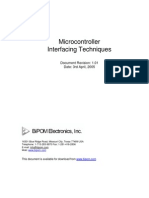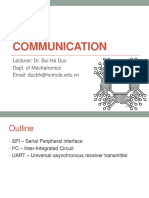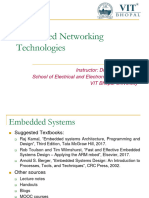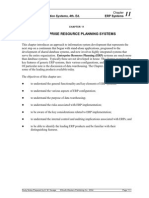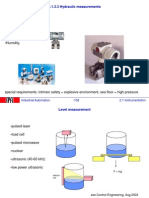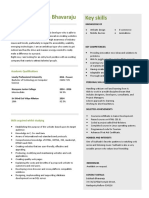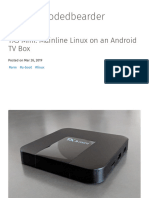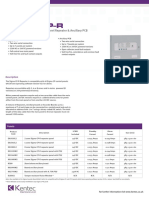0% found this document useful (0 votes)
46 views38 pagesLecture 9
The document provides an overview of communication protocols in microcontrollers, focusing on serial communication methods like SPI and I2C. It details their features, advantages, disadvantages, and applications, particularly in relation to the ESP8266 and Arduino Uno microcontrollers. Additionally, it discusses configuration steps, protocol selection criteria, and error handling strategies.
Uploaded by
UTSAV CHABHADIYACopyright
© © All Rights Reserved
We take content rights seriously. If you suspect this is your content, claim it here.
Available Formats
Download as PPTX, PDF, TXT or read online on Scribd
0% found this document useful (0 votes)
46 views38 pagesLecture 9
The document provides an overview of communication protocols in microcontrollers, focusing on serial communication methods like SPI and I2C. It details their features, advantages, disadvantages, and applications, particularly in relation to the ESP8266 and Arduino Uno microcontrollers. Additionally, it discusses configuration steps, protocol selection criteria, and error handling strategies.
Uploaded by
UTSAV CHABHADIYACopyright
© © All Rights Reserved
We take content rights seriously. If you suspect this is your content, claim it here.
Available Formats
Download as PPTX, PDF, TXT or read online on Scribd
/ 38

